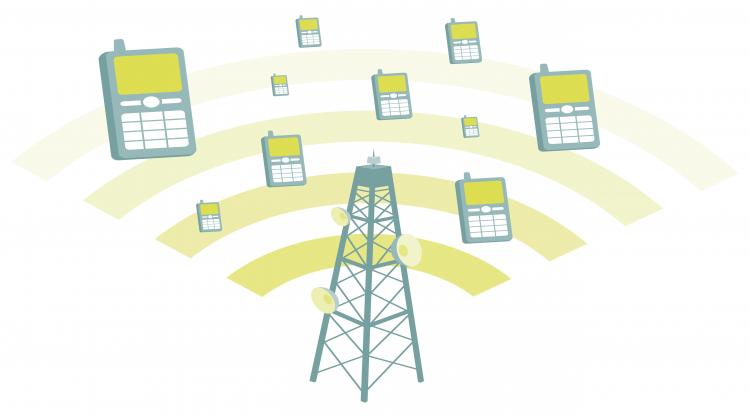FCC Allocates Funds for Rural ILECs Selecting Universal Service Cost Model
January 6, 2017 | by Andrew Regitsky

A couple of weeks ago we reported on a major dilemma for the FCC. Last March the Commission approved a voluntary path that a rural rate-of-return (ROR) ILEC could choose that would provide it with definite universal service support dollar amount per year over a ten-year time period in exchange for meeting FCC mandated milestones for broadband deployment in its territory. The annual funding for each ILEC would be determined by using a cost model called the Alternative Connect America Cost Model (A-CAM) similar to the one already used by larger price cap ILECs. A 10-year budget of $150 million annually was established for the program, with an additional $50 million in reserve if the budget was exceeded in a given year.
However, much to the Commission’s chagrin, many more ILECs selected the cost model than it had forecasted. Thus, the Wireline Competition Bureau (Bureau) was forced to announce that model based support and transition payments would exceed the overall 10-year budget set by the Commission by more than $160 million annually. With model-based universal service funding (USF) targeted to begin on January 1, 2017, and not enough funding available, the Commission turned to the industry for help, and sought suggestions for a solution. After several weeks of meeting with small ILECs and their associations, on December 20, 2016, the Commission released a Report and Order and Further Notice of Proposed Rulemaking (in Docket 10-90) to announce its plan of action. The plan consists of a combination of measures designed to enable as many electing carriers as possible to receive model-based support, and at the same time, maximize broadband deployment in rural areas.
First, since it had the option to do so in the original proposal, the Commission allocated an additional $50 million annually to the budget for model-based support.
Second, for those carriers for whom the offer of model-based support was less than the legacy support they received in 2015, the Commission chose not to revise the model calculated support amounts with its associated obligations. Instead, it directed the Bureau to immediately to authorize these carriers to receive A-CAM support pursuant to their existing elections.
These carriers accepted 45 offers of support and will have a $200 per location funding cap with the associated deployment obligations in the original proposal. Because there is no change in the offered support amount or deployment obligations, these carriers’ election of the model is irrevocable. The Commission directed the Bureau to immediately issue a public notice authorizing the Universal Service Administrative Company (USAC) to disburse the appropriate amounts of model support to these carriers.
For the remaining ILECs for whom the model support is greater than the legacy support, the Commission adopted a methodology that makes revised offers that prioritizes support to those areas of the country that have the lowest deployment of broadband.
As a first step, the Commission reduced the funding cap to $146.10 per location, the maximum amount of support per location that Connect America Fund Phase II provides to price cap ILECs. However, revised model support amounts using this lower funding cap still would exceed the budget, therefore the Commission directed the Bureau to further reduce support offers by varying percentages based on the percentage of locations lacking 10/1 Mbps broadband development.
Those carriers with lower current deployment will be offered a higher percentage of the adjusted offer amount, so funding is targeted more towards companies that have deployed 10/1 Mbps broadband service to a lower percentage of locations in eligible high-cost census blocks. The percentage reduction in support for these carriers effectively sets a unique per-location funding cap for each carrier based on the cost characteristics of its service area. Thus, lower cost service areas will have lower funding caps than higher cost service areas.
The Commission concluded that this approach has several benefits over an approach of uniformly reducing the funding per location cap across the board. By using a proportional reduction in this step of the process, higher-cost carriers’ average support per location will be higher than if it had continued to reduce the funding cap uniformly for all carriers. In addition, the FCC expects that this approach will result in broader geographic diversity in A-CAM authorizations.
The Bureau will soon release a Public Notice announcing the revised model-based support amounts and revised deployment obligations. Carriers will have 30 days to confirm that they are willing to accept the revised final offer. The Commission conditions the second offer of model support upon a requirement that ILECs electing that second offer agree to meet the terms of the original offer if additional high-cost support becomes available in 2017 to fund the original offers.
In the Further Notice of Proposed Rulemaking (FNPRM), the Commission requests industry comments on whether to allocate additional high-cost funding to the model. Should the budget for the model be increased to provide the full amount of the original offer for some or all of those carriers that accepted the second offer of model-based support? Or, should the budget be increased by a lesser amount? Comments are due 30 days after the FNPRM appears in the Federal Register.
By Andy Regitsky, CCMI

